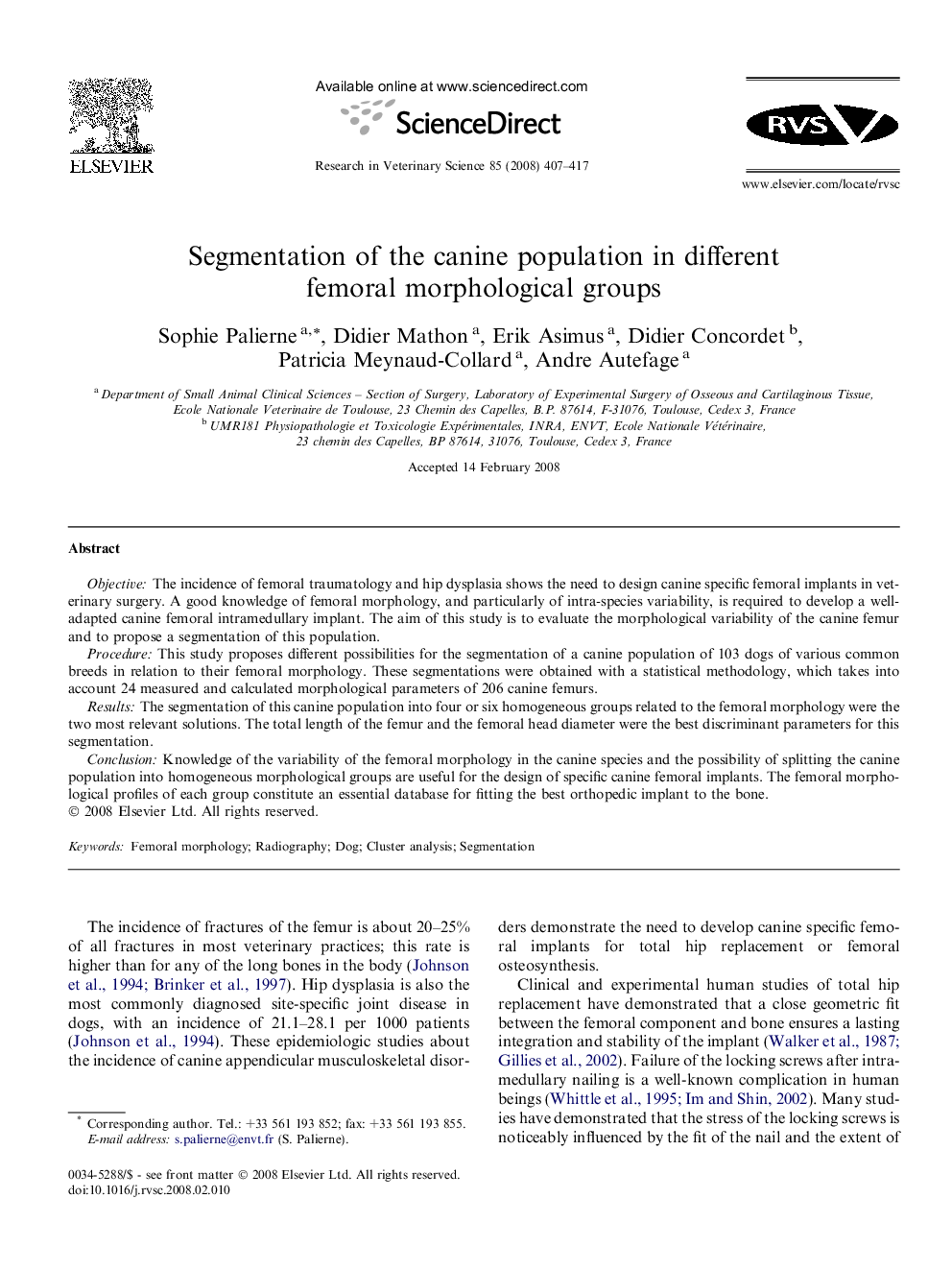| Article ID | Journal | Published Year | Pages | File Type |
|---|---|---|---|---|
| 2456205 | Research in Veterinary Science | 2008 | 11 Pages |
ObjectiveThe incidence of femoral traumatology and hip dysplasia shows the need to design canine specific femoral implants in veterinary surgery. A good knowledge of femoral morphology, and particularly of intra-species variability, is required to develop a well-adapted canine femoral intramedullary implant. The aim of this study is to evaluate the morphological variability of the canine femur and to propose a segmentation of this population.ProcedureThis study proposes different possibilities for the segmentation of a canine population of 103 dogs of various common breeds in relation to their femoral morphology. These segmentations were obtained with a statistical methodology, which takes into account 24 measured and calculated morphological parameters of 206 canine femurs.ResultsThe segmentation of this canine population into four or six homogeneous groups related to the femoral morphology were the two most relevant solutions. The total length of the femur and the femoral head diameter were the best discriminant parameters for this segmentation.ConclusionKnowledge of the variability of the femoral morphology in the canine species and the possibility of splitting the canine population into homogeneous morphological groups are useful for the design of specific canine femoral implants. The femoral morphological profiles of each group constitute an essential database for fitting the best orthopedic implant to the bone.
